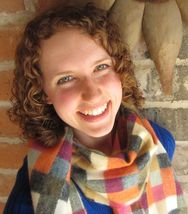I enrolled in a drawing class this summer to expand my artistic repertoire and cultivate any inner Da Vinci I had been harboring. The studio where I took lessons emphasized observation as the primary foundational skill: the key to good art is knowing how to see what you see. Of all the elements we explored, the class on light proved to be the most difficult for me, but also the most influential.
Our homework was to put an egg under a lamp and draw it. Beneath the beam of light, the egg had sharp contrasts and lines, a bright glow on the front and a defined, dark shadow along the back. Yet when I drew it, my egg looked completely unrealistic. I could not figure out why this was, especially since I was drawing exactly what I saw. I spent hours sketching, shading and erasing, before I threw up my hands in defeat.
At our next class, my teacher explained the secret: when you draw an object, you cannot stare at it with open eyes; you have to squint. When your eyes are fully open, they take in all the light and shadow tones, most of which you do not need. Squinting blurs your view so that only the important ones stand out … leaving you with a softer, more realistic shape of the object and the principal light that touches it. It then made sense that my original drawing did not work: I saw too many details; they cluttered my view of the object itself.
After discovering the trick of squinting, my drawing improved significantly. I redid the egg assignment and it looked like the real thing this time – a drawing worth a frame. I also realized that the lesson extended into other areas in my life. Once when I found myself consumed with a problem, a friend asked me about my physical vision. “You wear glasses, right? Are you near-sighted or far-sighted?” “Near-sighted.” “Ok, so you’re used to seeing all the little details up close, but have trouble seeing something far away. Maybe you’re having the same problem here . . . you see all the details. Try stepping back and looking at the big picture.” It is the same concept. Details can create a cloud around what we want to accomplish and we end up running around in circles because we cannot see beyond them. The result is frustration and a distorted view of reality. When you clear away all the clutter surrounding a situation – all the excess information, emotions and complications – you see the important part clearly. You see your goal or the direction you need to take.
The drawing studio taught me to produce more in my work by seeing less. I thought being a good observer meant taking into account everything in your scenario and utilizing what you needed. It turns out this is not what good artists do. They parse out their view and see only what they need to, skipping the details that will clutter their work. This is the key to good art. I would argue it is key to a good life as well.
The drawing studio taught me to produce more in my work by seeing less. I thought being a good artist meant taking everything into account and seeing what you needed. However, this is not true. Good artists change their view in order to see what they need, skipping the details that will clutter their work. This is the key to good art. I would argue it is key to a good life as well.


